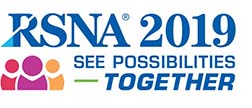

ParticipantsSteven Yevich, MD, MPH, Houston, TX (Moderator) Speakers Bureau, Endocare, Inc
Matthew R. Callstrom, MD,PhD, Rochester, MN (Moderator) Research Grant, EDDA Technology, Inc Research Grant, Galil Medical Ltd Consultant, Medtronic plc Consultant, Endocare, Inc Consultant, Johnson & Johnson Consultant, Thermedical, Inc
callstrom.matthew@mayo.edu
ParticipantsSteven Yevich, MD, MPH, Houston, TX (Presenter) Speakers Bureau, Endocare, Inc
ParticipantsAnil N. Kurup, MD, Rochester, MN (Presenter) Research Grant, Galil Medical Ltd; Research Grant, EDDA Technology, Inc; Royalties, Wolters Kluwer nv
kurup.anil@mayo.edu
LEARNING OBJECTIVES1) To describe common complications that occur with MSK intervention. 2) To share tips and tricks to facilitate effective MSK interventions. 3) To highlight necessary pre-procedural patient preparation and post-procedural expectations.
ParticipantsJack W. Jennings, MD, Saint Louis, MO (Presenter) Speakers Bureau, Merit Medical Systems, Inc; Consultant, Merit Medical Systems, Inc; Consultant, Medtronic plc; Consultant, Galil Medical Ltd; Consultant, BTG International Ltd; Consultant, C. R. Bard, Inc
ParticipantsSean S. Park, MD, PhD, Rochester, MN (Presenter) Nothing to Disclose
1) Describe spine SBRT: indications and patient selection, technique and delivery, and oncologic outcomes and toxicities.
ParticipantsJunichi Taniguchi, Nishinomiya, Japan (Presenter) Nothing to Disclose
Haruyuki Takaki, MD, Nishinomiya, Japan (Abstract Co-Author) Nothing to Disclose
Ryo Kunimoto, Nishinomiya, Japan (Abstract Co-Author) Nothing to Disclose
Hiroyuki Yokoyama, Nishinomiya, Japan (Abstract Co-Author) Nothing to Disclose
Atsushi Ogasawara, Kitakyushu, Japan (Abstract Co-Author) Nothing to Disclose
Hiroshi Kodama, MD, Nishinomiya , Japan (Abstract Co-Author) Nothing to Disclose
Yasukazu Kako, Nishinomiya, Japan (Abstract Co-Author) Nothing to Disclose
Kaoru Kobayashi, MD, Nishinomiya, Japan (Abstract Co-Author) Nothing to Disclose
Hiroyuki Futani, Nishinomiya, Japan (Abstract Co-Author) Nothing to Disclose
Koichiro Yamakado, MD, PhD, Nishinomiya, Japan (Abstract Co-Author) Nothing to Disclose
To retrospectively evaluate the clinical utility of transarterial embolization using microsphere (MS) in patients with treatment-refractory malignant bone and soft tissue tumors.
METHOD AND MATERIALSBetween 2014 and 2018, 11 patients (7 female and 4 males) with a median age of 69 years (range, 49-89 years) underwent embolization using MS for the treatment of treatment-refractory malignant bone and soft tissue tumors. Tumors were located in the body trunk in 8 patients (73%) and in the limb in 3 patients (27%) with a median maximum tumor diameter of 9.2 cm (range, 2.1-24.6 cm). Seven patients (64%, 7/11) complained of pain caused by tumors before embolization. The response [complete remission (CR) + partial remission (PR)] and the disease control [CR + PR + stable disease (SD)] rates were evaluated by modified Response Evaluation Criteria in Solid Tumor (mRECIST) criteria, adverse events by Common Terminology Criteria for Adverse Events (CTCAE) version 5.0, and survival rate after embolization by Kaplan-Meyer method. Visual analog scale (VAS) scores were evaluated before and within 1 week after embolization.
RESULTSThe response rate was 36% [CR, 18% (2/11); PR, 18% (2/11)], and disease control rate 82% [SD, 45% (5/11)] at 1 month after embolization. Grade 3 skin ulcer developed in 2 patients (18%, 2/11), and paresthesia in a patient (9%, 1/11). The cumulative overall survival rates were 40% (95% confidence interval (CI), 6-74%) at 1 year and 20% (95% CI, 1-58%) at 3 years, and with a median survival time of 11 months. VAS scores decreased 2 or more in 5 patients (71%, 5/7).
CONCLUSIONThis preliminary study demonstrated possibility that MS embolization may help to control treatment-refractory bone and soft tissue tumors and relieve pain caused by tumors.
CLINICAL RELEVANCE/APPLICATIONTransarterial embolization with microsphere for treatment-refractory malignant bone and soft tissue tumors can be effective for local tumor control and pain relief.
ParticipantsRahul A. Sheth, MD, Houston, TX (Presenter) Nothing to Disclose
ParticipantsNariman Nezami, MD, New Haven, CT (Presenter) Nothing to Disclose
Francis Y. Lee, MD,PhD, New Haven, CT (Abstract Co-Author) Nothing to Disclose
Igor Latich, MD, New Haven, CT (Abstract Co-Author) Nothing to Disclose
dr.nezami@gmail.com
PURPOSEOpen surgical repair is often not feasible or safe in patients with osseous metastatic disease, particularly in areas at risk for pathologic fracture adjacent to weight-bearing articular surfaces. However, percutaneous cementoplasty and internal fixation with screws have each shown to be effective independently. This study reports Ablation-Osteoplasty-Reinforcement-Internal Fixation (AORIF) technique and technical success for osteolytic skeletal metastases adjacent to weight-bearing articular surfaces.
METHOD AND MATERIALSThis is a retrospective analysis of 18 patients who underwent image guided percutaneous internal screw fixation, radiofrequency ablation, balloon osteoplasty, and cementoplasty in 16 sites of osseous metastasis. Post-procedural outcomes, improvement of pain and mobility were evaluated. All of the patients had advanced osseous metastatic disease with impending pathologic fractures and persistent pain refractory to radiotherapy or systemic treatment.
RESULTS100% of the procedures were technically successful without post-procedural complications. All of the patients who received the modified technique were found to have improved pain and mobility after the procedure. Importantly, all patients, except for one, were treated on outpatient basis and none required conversion to open repair.
CONCLUSIONThe AORIF is an effective strategy in improving pain and reducing the risk of pathologic fracture in patients with advanced osteolytic metastatic disease near articular surfaces. Concomitant RFA provides a degree of local tumor control and in conjunction with balloon osteoplasty creates increases the penetration of cement within the diseased bone.
CLINICAL RELEVANCE/APPLICATIONThe AORIF is an effective strategy in improving pain and reducing the risk of pathologic fracture in patients with advanced osteolytic metastatic disease near articular surfaces.
ParticipantsMuneeb Ahmed, MD, Boston, MA (Presenter) Research Grant, General Electric Company Stockholder, Agile Devices, Inc Scientific Advisory Board, Agile Devices, Inc
ParticipantsAllison S. Aguado, MD, Wilmington, DE (Presenter) Nothing to Disclose
ParticipantsJulien Garnon, MD, Strasbourg, France (Presenter) Proctor, Galil Medical Ltd
1) To understand the role of multimodality image guidance for MSK procedures to see the clinical benefit of combined fluoroscopy and CT-scan for complex bone procedures. 2) To understand how ultrasound and MRI can improve the precision of soft tissue interventions.
ParticipantsFrederic Deschamps, Villejuif, France (Presenter) Research Consultant, Medtronics plc; Research Consultant, BTG International Ltd; Research Consultant, General Electric Company
ParticipantsSean M. Tutton, MD, Milwaukee, WI (Presenter) Consultant, BTG International Ltd; Consultant, Galil Medical Ltd; Consultant, Biocompatibles International plc; Consultant, IZI Medical; Consultant, Stryker Corporation; Researcher, Siemens AG; Consultant, Siemens AG;
stutton@mcw.edu